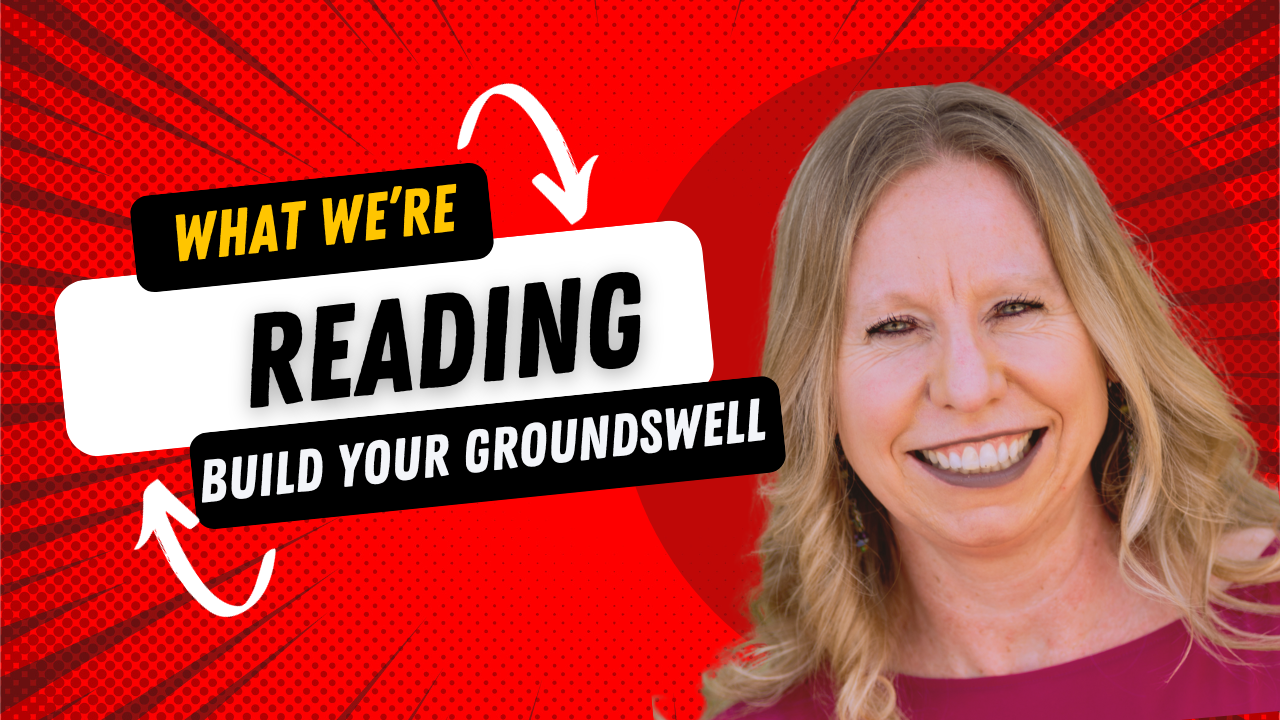I’m an avid reader of news, in all forms. I particularly love newsprint still.
I’m the one. It’s me.
I also think it’s a critical time to care for the news industry, because community market journalism is a major institution in our communities. It’s fair to say that the ongoing dissolution of trust and growing pessimism align with the decline of local community market journalism. These organizations form a bond that ties together communities, and communities were purpose-built since the beginning of time to band people together and protect each other from harm. We have an innate sense that with community, we are safer.
Also … I appreciate a good scoop and an apolitical takedown of a strong-arm power broker. But at the end of the day, I know that what I really love is the business of the news business. The operations. The back of the house stats. The revenues. The losses. The costs. All of it. It was the first entrepreneurial venture I took on, in fact. As a kid growing up in the West Texas oil patch, I started the Preston Reporter-Telegram, adopting the moniker of my town’s newspaper but targeting a segment of the population I deemed to be underserved: My street. Preston Drive. Then it was half-mile stretch of middle-class homes on the edge of Midland, Texas, and at its western end was the beginning of the vast West Texas desert. The frontpage story of the first edition, which I printed on my dad’s office copier on 11×17 paper, featured a story on Santa Claus’s phone number. There I was breaking news and changing lives.
To this day, I even love the amateurish takes on why the newsprint business is flailing. These takes can be so hacky, but I appreciate them despite being loosely informed and presumptuous. I even loved these takes from inside the newsroom when I worked there as well. Then, it was full of what some of us called newsroom dinosaurs. The dinosaurs had their own ranting takes on digital news and how it would lead to the downfall of civilization when in fact they only demonstrated complete and total ignorance of how audiences consume news product. It was like watching a professional photographer with a degenerative eye disease slowly lose vision … except in this metaphor, the disease was from his own doing.
The news business is fascinating. I’m a sucker for a good news business take.
So, I was quick to take up the recent publication of The Times: How the Newspaper of Record Survived Scandal, Scorn, and the Transformation of Journalism by Adam Nagourney and published by Penguin Random House. It provides a detailed insider account of the paper’s business affairs and news operations. By reaching back to around the Nixon administration, Nagourney takes apart the strategic business decisions that helped the newspaper financially survive the tumult of the last decade. Despite the newspaper business’ fall from a once lofty perch, the Times has proven itself to be a sustainable — and profitable — operation. Nagourney and other analysts credit the success at the Times and its leadership with taking a digital-first approach since 2020, starting with the organization earning buy-in on digital strategy from the entire organization. Some of this even included tearing down the silos and merging conversation between business affairs operations and news divisions.
This was a major issue even in the early 2000s when newsroom critiques shunned any reporters who might venture a conversation with someone from the marketing department. Indeed, especially in smaller community market dailies, briefing a marketing director on the details of an upcoming series of stories on a particular industry would draw major rebuke from other reporters. Arbitrary and petty though it was, it’s more so myopic and sad to look back on those behaviors and see how it helped spell out the demise of certain newsrooms. Indeed, as Nagourney notes, leadership at the Times in the late 1960s and early 1970s rewrote the rules around business affairs weighing in on news operations. In one instance, Nagourney highlights how editors relented when their advertising reps encouraged lifestyle coverage of food and dining in order to draw ad placements by big grocers. It was a move that newsroom leadership later said was critical and didn’t change how reporters covered news. In fact, it didn’t affect news operations at all.
But, more interesting, perhaps, is how Nagourney uncovers and confirms what some of us who grew up skeptical of the urban media suspected all along. It harbored brilliant but woefully ignorant leadership whose hypocrisy ran deep. Nagourney reveals just how poorly leadership treated the women who worked at the paper. Many were held back from promotions, and lawsuit settlements would reveal a disparity in pay for women. The organizing and legal action taken by women at the paper resulted in retaliation that leaders didn’t bother hiding. Perhaps a sign of the — ahem — times, it nonetheless is more criminal in my mind as they went about their own operations in a way that contradicted values expected of other organizations they covered. Expecting society to advance and treat women more fairly in the workplace certainly appeared to be a do-as-I-say behavior than a do-as-I-do approach.
It’s the kind of hypocrisy that drove me to journalism in college as I transitioned from studying political science to an area where I intended to instead explore ways to be a better communicator to large audiences. While coastal elites enjoyed their lofty perch and critique of other economies, their systemic behavior needed to be equally questioned … in my mind anyway.
Nagourney does spend a great deal of time covering the news operations side of the business, exploring the aftermath and response to the Challenger space shuttle disaster for which the Times won a Pulitzer Prize for its national coverage.
Of course, my longstanding issues with the Times is more or less related to what conservatives like myself consider a bias. More so, I’m irked by the general tone, which earned it my favorite moniker: The New Dark Times. As a result, I’ve long been pushed to the Wall Street Journal since 2006 when it could still be used as a blanket with its wider broadsheet design. When unfurled completely, it could also be used as a poncho or as a fallout shelter. I’m apparently not the only one to have this issue with the Times and its tendency to lean Left. In a new 17,000-word article by James Bennet in The Economist, “the Times’s problem has metastasised from liberal bias to illiberal bias, from an inclination to favour one side of the national debate to an impulse to shut debate down altogether.” And also this: “The reality is that the Times is becoming the publication through which America’s progressive elite talks to itself about an America that does not really exist.”
Something tells me the dismissal of Bennet’s take will occur coastally as well as in between where among those red states, an ironic chasm of Americans are happy to let them bandy about merrily in elitist cliques. But I digress.
I look forward to more print journalism successes even as it occurs in a digital-only medium. There will always be a demand for current events insight. Certainly, a market correction is well overdue, and consumers should and must shift back to demanding more than a brand of journalism that speaks to their own political self-identity. It’s time to correct what emerged from efforts to mute what many of us viewed as a liberal media slant as Fox News doubled down on an approach enterprised by conservative talk radio mega stars, perverting fair and balanced coverage into a mockery. We didn’t get what we should have. What we got was worse — unprincipled partisans doling out incendiary click bait through any accessible channel offering even a remote possibility of virality.
It’s not news, that’s for sure.
But, with enough insight from Nagourney and others, perhaps we can avoid disaster and prompt a correction of our own by demanding more from journalism. Moving away from proudly partisan brands, we can start by exploring local community market outlets finding success. For example, in Central Texas, the success of Community Impact is starting to reach beyond the Austin area and into the Dallas and Houston suburbs. The delight that results from high-quality local coverage is tied to our innate sense that community provides safety, and when we invest in knowledge about our community, it bolsters that sense and inspires safety and security.
In the pandemic’s wake, securing ourselves by seeking out more insight and information from a variety of sources — some whose motives we can continue to question and rightly so — will deliver us from an ongoing pessimism and sense of doom perpetuated by big media manipulators.

See what else Groundswell Health is working on in healthcare >>
SAY LESS: Mastering the Art of Concise Communication #WhatWe’reReading
By Jovi Guerra, Communications Manager | Groundswell Health 📖 Smart Brevity: The Power of Saying More with Less Co-creators
Move Fast and Break Things is no way to Think About AI #WhatWe’reReading
By Steven Carr Communications Manager | Groundswell Health From Asimov to Heinlein to Cameron, I’ve read and watched all manner
The Business and Recent History of the New York Times #WhatWe’reReading
I’m an avid reader of news, in all forms. I particularly love newsprint still. I’m the one. It’s me. I
Pushing back against the daily grind #WhatWe’reReading
I’m mostly a fiction reader, but I have a particular affinity for the strategy and management articles in Harvard Business




